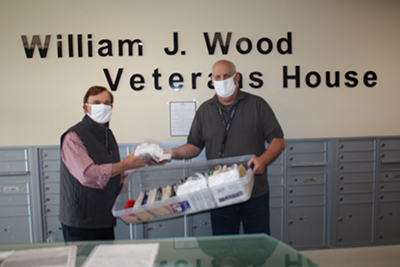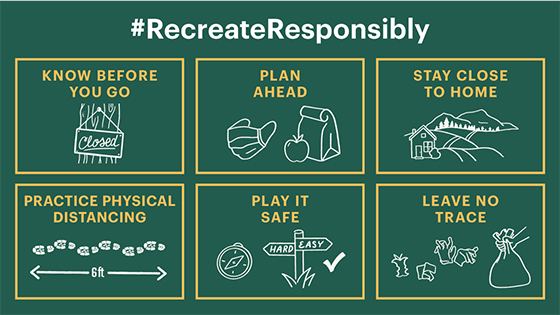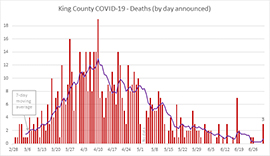
Dear Friends:
Today’s update includes information on the state’s funding for rent assistance, tribal recovery efforts, Sound Transit’s full fare resumption, Federal Task Force for Veteran Suicide-Prevention, and more.
Washington Trivia
How did Mt. St. Helens get its name?
How much destruction did its eruption cause?
(Answers are at the bottom).

Supporting our Veterans
I recently visited the William J. Wood Veterans House and donated masks and books to Alan Clapper for our veterans. Thank you to Alan and his team for continuously supporting veterans in our community!

With Alan Clapper of the William J. Wood Veterans House
Governor Inslee announces funding for rent assistance, tribal recovery efforts, small businesses and non-profits
Gov. Jay Inslee announced that this week, the state distributed $365 million in federal funds to help with continuing COVID-19 relief efforts in the state of Washington. This sum includes $351 million from the CARES Act fund and $13.5 million from FEMA. To date, the state had distributed more than $950 million in federal COVID-19 relief and federal response funds.
$163 million of this week’s distribution went to the state Department of Commerce to help populations hit hardest by the pandemic. Funds allocated included:
• $100 million for low-income renters at risk of becoming homeless, including rental assistance through an existing framework that sends payments directly to landlords;
• $20 million to provide grants to small businesses, support for local economic development organizations that give assistance to businesses and support for data-driven recovery plans by region and industry;
• $20 million to provide operating grants for non-profit organizations that are working to address disparities and inequities exacerbated by increased need and funding shortfalls due to COVID-19. Many of these include community and youth development programs;
• $20 million to help tribes with pandemic recovery efforts.
You can read more about it here.
Seattle Aquarium
On June 29th, the Seattle Aquarium reopened to the public with 15% capacity after being closed for months to help slow the spread of COVID-19. When buying tickets online, visitors will choose a specific date and time and will enter with a set number of people in 30-minute blocks. Visit the Seattle Aquarium’s website for more information.
King County Parks Update
• King County Parks urges visitors to respect 'no fireworks' rules
As many official fireworks displays are cancelled this year due to COVID-19, King County Parks reminds visitors that fireworks are not allowed in King County’s parks and that all parks and trails will close at dusk, the regular closing time.
• The Weyerhaeuser King County Aquatic Center remains closed until September 21st. Parks will be replacing the skylights in the natatorium, a project that had been in progress prior to the COVID-19 closure, and requires a full facility closure.
• Parks urges visitors to continue to recreate responsibly by following these simple tips:

1. Know Before You Go: Check the status of the place you want to visit. If it is closed, don’t go. If it’s crowded, have a plan B.
2. Plan Ahead: Prepare for restroom facilities to be closed, pack a lunch and bring essentials like hand sanitizer and a face covering.
3. Explore Locally: Limit long distance travel and make use of local parks, trails, and public spaces. Be mindful of your impact on the communities you visit.
4. Practice Physical Distancing: Keep your group size small. Be prepared to cover your nose and mouth and give others space. If you are sick, stay home.
5. Play It Safe: Slow down and choose lower-risk activities to reduce your risk of injury. Search and rescue operations and health care resources are both strained.
6. Leave No Trace: Respect public lands and water, as well as Native and local communities. Take all your garbage with you.
7. Build an Inclusive Outdoors: Be an active part of making the outdoors safe and welcoming for all identities and abilities.
King County Security Tips - "Google" Yourself
With the rise of the digital age, it is difficult to remain totally anonymous on the internet. Having an online presence and maintaining your social networks can be a wonderful and valuable tool, but sometimes we are unaware of how much personal information can be obtained about us over time.
Have you tried typing your name or your email address in a web search like Google or Bing? You may even want to search for your work email to make sure it has not been compromised and made available on the internet. By searching and analyzing your online presence often, you can take steps to remove those things you may not want strangers to see.
Sound Transit Update on Fares
Starting today, fare collection has resumed on ST Express buses*. With this resumption, Sound Transit has also transitioned to a single flat fare of $3.25 for all Adult riders on ST Express, regardless of distance traveled. Flat fares for ORCA LIFT, youth, seniors and riders with disabilities remain the same. More information on the flat fare is available at SoundTransit.org/flatfare.
* Fare collection is dependent on the completion of safety measure being installed at the front of the buses, so some routes may continue to be fare-free until these measures are complete.
Temporary Recovery Fares on Link light rail and Sounder trains expire and fares return to regular full fares published for Link light rail and Sounder service.
People Who Are at Increased Risk for Severe Illness
The CDC has updated and expanded the list of who is at increased risk for getting severely ill from COVID-19. Among adults, the risk for severe illness from COVID-19 increases with age, with older adults at highest risk as well as other factors such as having underlying medical conditions.
Even the youngest and healthiest among us can become targets of the coronavirus. By understanding the factors that put you at increased risk, you can make decisions about what kind of precautions to take in your daily life. Visit the CDC’s website to see the evidence used to update the list of underlying medical conditions that increase a person’s risk of getting severely ill from COVID-19.
Veterans Affairs and White House launch Veteran Suicide-Prevention Task Force
The White House’s interagency veteran suicide prevention task force released a two-year, $53 million strategy outlining public health approaches to suicide prevention, with emphasis on the special needs of veterans. The task force is expected to culminate with the development of legislation in Congress that authorizes new funding for federal programs for veteran suicide prevention. However, the timing of this proposal remains unclear as legislators face the upcoming FY 2021 appropriations deadline on September 30, 2020, as well as a potential fifth legislative package to address the COVID-19 crisis. Read more about this here.
To learn more about VA’s suicide prevention resources and programs, visit www.mentalhealth.va.gov/suicide_prevention/.
Veterans who are in crisis or having thoughts of suicide, and those who know a veteran in crisis, can call Veterans Crisis Line for confidential support 24 hours a day. Call 800-273-8255 and press 1, send a text message to 838255 or chat online at VeteransCrisisLine.net/Chat.
King County Case Update
Today, Seattle – King County Public Health reported 149 new cases, bringing the total in King County to 10,345. In addition, Public Health reported 3 new deaths, bringing the total in the county to 589.
 |
 |
|---|---|
 |
 |
Stay In. Stay Healthy. Stay Strong.
Pete von Reichbauer
King County Councilmember

Washington trivia answers:
Previously called Tah-one-lat-clat or Fire Mountain by the Klickitat Indians in Lewis County, Captain George Vancouver, in his exploration in May of 1792, discovered the mountain and named it after his friend, Alleyne Fitzherbert Baron St Helens.
Mt. St. Helens’ eruption on May 18, 1980, a hundred eighty-eight years after George Vancouver’s discovery, had the equivalent force of 10,000 Hiroshima type atomic bombs, which caused Skagit County residents to jump to what seemed like a sound of a cannon firing. Its snowcap melted an estimated 141,000 acre feet of glacial ice, releasing 46 billion gallons of water, causing about 23,000 acres of blowdown and wiping out an 8x15 mile fan shaped section of the Earth’s surface, leaving 5,000 acres of standing dead trees. The eruption destroyed 221 homes, 12 bridges and 17 miles of railroad track.
|
Contact me:
pete.vonreichbauer@kingcounty.gov |
 |